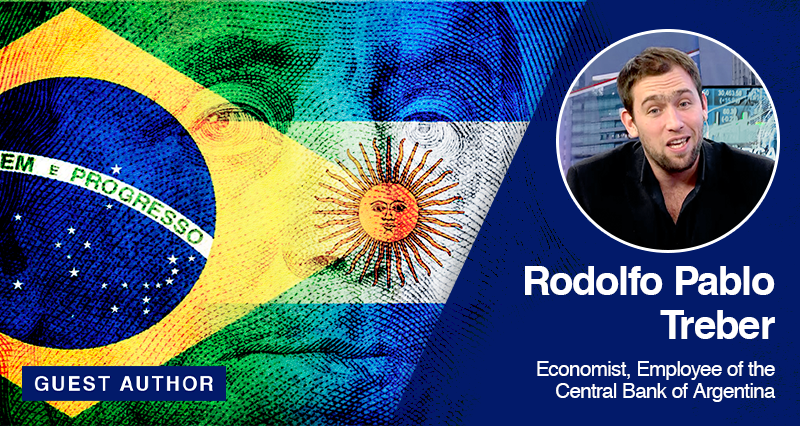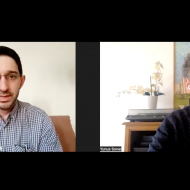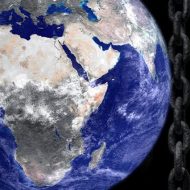By Rodolfo Pablo Treber *
At the beginning of last year, the current president of Brazil (at that time a candidate), Luiz Inácio Lula da Silva promoted the creation of a common currency in Latin America as a tool to expand relations between the countries of the region and destroy the anchor of political dependence that the US dollar means.
This old, but actual idea began to take shape in an supporting geopolitical scenario: The North American currency is losing hegemony with the consequence of increasing imperialist interference in Our America. Reflections of this tendency are coups d’état (Bolivia, Peru), judiciary intervention in Brazil, IMF interference in Argentina, economic blockades and terrorist attacks (Venezuela, Cuba, Nicaragua), among other actions by which the United States intends to deepen the exploitation and looting of our peoples and our land.
These days, regional economic integration, and the common currency as part of it, constitute a necessary and urgent defensive geopolitical response to the brutal imperialist advance.
Context
During the expansionist stage of the North American empire, specifically in 1971, the Richard Nixon government issued a package of measures (known as the “Nixon shock”) where, among other things, it unilaterally broke the Bretton Woods pact that regulated the price and type of exchange of the currencies of the signatory countries according to the gold amount that each one had in verifiable reserves. At that time, the US had a dominant position in global finance as a result of the wars in Asia and Europe, and the need to have a gold backing for its monetary policy meant a barrier to its imperialist will to position the dollar as a global currency.
So, from that moment, the amount of issue of the dollar and its price were tied to the political will of the United States governments. The US dollar’s safety for value worth was (and is) the it’s military apparatus’ – the Pentagon – power to submiss. There is no other rationale, or technical explanation, for determining the value of the dollar throughout the world. It is clearly a political imposition.
This scheme was perfected in Our America during the 1990s, after successive covert military invasions and coups d’état,orchestrated and financed from the North. These resulted in governments aligned with the White House that borrowed millions of dollars from the International Monetary Fund (IMF) in order to generate dependency and dollarization in local economies. The ultimate goal of the domination strategy is to force each of the countries to increase their exports through excessive exploitation of their common goods in order to obtain the dollars necessary to pay debts and supply themselves with goods and services through imports. This export pressure and planned shortage of foreign exchange had, and has, resulted in industrially underdeveloped countries (with all the negative social consequences that this entails) and extreme exploitation through ferocious and growing extractivism.
The SUR Currency is a correct geopolitical response to this situation since it can be an effective tool to reduce dependence on the US dollar.
The SUR currency
The project of Moneda SUR, currently being negotiated between the governments of Brazil and Argentina, seeks to establish a common currency for trade between the two countries.
It is worth clarifying that this “common currency” is something very different from what is known as the “single currency” (euro, for example) which, unlike the South American idea, replaces local currencies. For the implementation of a single currency, it is necessary to have an unequivocal monetary and commercial policy among all member countries, which entails similar interest rates and price indices. In other words, it requires a centralized economic policy that has as a risk, and weakness, in the fact that the country or countries with the best pre-existing development conditions would be greatly benefited, generating new relations of domination and dependency, as occurs in the experience of the European Union.
On the other side, the common currency is a shared one, in this case between Brazil and Argentina, which can be used for joint investments or commercial relations between both countries.
The benefits are multiple and superior, quantitatively and qualitatively, to the risks and weaknesses that may arise:
- First, using a common currency for trade would reduce the burden of dependence on dollars for both countries, while at the same time weakening the currency of the oppressor country. In the year 2022, Brazil sold goods and services to Argentina for a total of 16,000 million dollars, while, conversely, Argentinaexported a total of 12,600 million. If there is a common currency, both nations could save the need to have at least 12.6 billion dollars, since the goods traded would offset that amount. These are significant figures in importance to alleviate the weight of dependence on the dollar and multilateral credit organizations (for example, for Argentina it is equivalent to 30% of its international reserves, Brazil being its main trading partner).
- Secondly, the common currency would promote an increase in trade between Brazil and Argentina, since the major problems caused by authorization or access to foreign currency for companies involved in purchases and sales would be avoided. Also, because the existence of a joint currency would facilitate binational investments that promote economic development and trade relations of both countries without the need for the interference of multilateral or transnational credit organizations.
- Also, because given the benefits of the common currency and the increase in exchange, one could easily move towards a trade balance between nations (in 2022 Argentina had a deficit of 3,365 million with respect to Brazil).
- The most important thing is that the common currency could be the first step towards regional integration and economic complementarity that involves more countries of Our America. This would turn the Great Homeland of the Caribbean and South America into a relevant political-economic actor on the new multipolar map.
Finally, it is worth noting that, in order to avoid falling into the volatility and uncertainty characteristic of the currencies of undeveloped economies, the original issue support should be based on the production of the member countries (raw material and principal price agreement). negotiable goods). In this way, the value of the currency would be tied to production, to work, and not to speculation in the financial markets. In principle, the inconvertibility of the currency is a necessity to avoid the sabotage of global financial power.
The SUR currency, without a doubt, can be a great political tool to, once and for all, to advance the objective of a united and economically and socially developed Patria Grande. The complementary characteristics of their economies and natural resources acting together open up the possibility of explosive development for their peoples. Everything that today, separated, weakens us for the benefit of the oppressor, united strengthens and frees us. But, as with all tools, their result will depend on the political will of the persons who use them.
* Rodolfo Pablo Treber is an economic analyst who works for the Central Bank of Argentina.









Leave a Reply